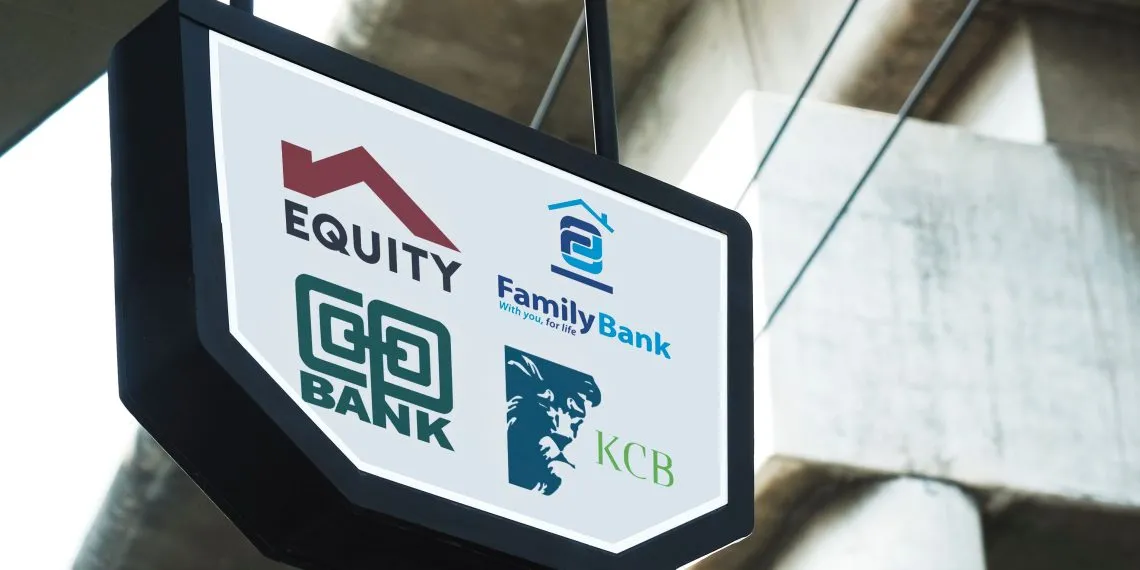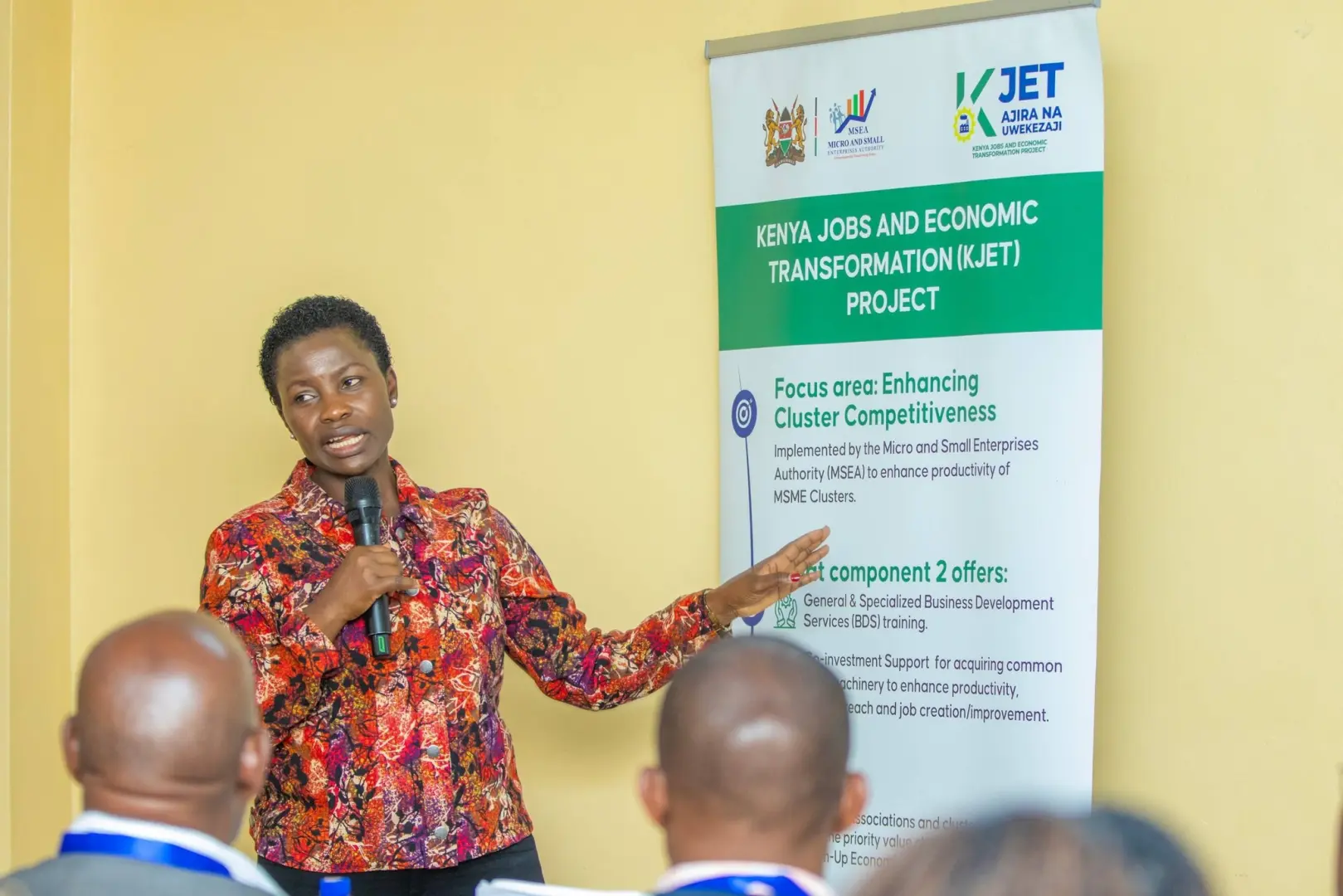For the first time in 23 years, the total value of assets held by Kenya’s commercial banks declined, falling 1.6% in 2024 to Sh7.6 trillion, marking a significant reversal in a sector that had experienced continuous growth since 2002 when assets rose 4.9% to Sh456.7 billion.
The Kenya Bankers Association (KBA) linked the latest decline to challenging economic conditions and an unstable macroeconomic environment that forced banks to adopt more conservative lending strategies while prioritizing government securities over private sector credit expansion.
Build the future you deserve. Get started with our top-tier Online courses: ACCA, HESI A2, ATI TEAS 7, HESI EXIT, NCLEX-RN, NCLEX-PN, and Financial Literacy. Let Serrari Ed guide your path to success. Enroll today.
Historical Context: Breaking Two Decades of Growth
Historical records indicate that the only other contraction since 2001 occurred that year, when industry assets dropped 2.3% to Sh425 billion, largely due to the liquidation of Trust Bank. The 2024 decline thus represents the first broad-based sector contraction in over two decades, highlighting the severity of economic challenges facing Kenya’s financial system.
This reversal follows more than two decades of continuous growth that saw the banking sector evolve into one of East Africa’s most sophisticated financial systems. The sector has historically played a crucial role in supporting Kenya’s economic development, with banks serving as the primary conduit for domestic credit allocation and financial intermediation.
Differential Impact Across Bank Categories
The contraction was not uniform across all banking institutions, with distinct patterns emerging based on bank size and market positioning:
Large and Medium Banks Bear the Brunt: Banks holding a dominant share of industry assets saw their total assets shrink by 3.5% to Sh5.7 trillion, while medium-sized banks experienced an even steeper decline of 17.4%. This pronounced impact on larger institutions reflects their greater exposure to volatile macroeconomic conditions and stricter regulatory scrutiny.
Small Banks Show Resilience: In contrast, small banks were the only segment to register growth, expanding their asset base to Sh576 billion. According to KBA, this reflects a strategic focus on niche markets as a core business approach, allowing smaller institutions to maintain growth by serving specialized customer segments less affected by broader economic headwinds.
Central Bank Analysis: Understanding the Decline
The Central Bank of Kenya (CBK) had earlier explained that the decline in the sector’s total assets was driven by multiple factors:
- Loans and advances decreased by Sh160.3 billion
- Placements reduced by Sh103.9 billion
- Other assets contracted by Sh1.2 billion
- Balances held at the central bank fell by Sh1.1 billion
These reductions reflect banks’ cautious approach to risk management amid uncertain economic conditions, with institutions preferring to maintain higher liquidity buffers rather than extend credit aggressively.
Credit Allocation Shifts: Government Securities vs. Private Lending
A significant trend emerged in how banks allocated their resources, with a pronounced shift toward government securities:
Private Sector Credit Compression: Loans and advances as a share of total assets dropped to 48.1% in 2024 from 49.4% in 2023, while net loans and advances decreased to Sh4.1 trillion from Sh4.2 trillion in 2023. This contraction reflects banks’ reluctance to extend credit amid elevated default risks and uncertain economic prospects.
Government Securities Preference: Investments in government securities climbed to 27.8% of total assets, suggesting banks were taking a more cautious approach to risk by preferring the relative safety of government paper over private sector lending. This shift has significant implications for private sector credit availability and economic growth prospects.
Deposit Growth Slowdown and Liquidity Challenges
The banking sector also experienced a dramatic deceleration in deposit mobilization:
Deposit Growth Collapse: Deposit growth slowed sharply to 1.23% from 15.1% the previous year, ending 2024 at Sh5.81 trillion. This dramatic slowdown reflects reduced household and corporate savings capacity amid challenging economic conditions, as well as increased competition from alternative investment vehicles.
The combination of declining assets and slowing deposit growth created a challenging operating environment for banks, forcing institutions to compete more intensively for both funding and profitable lending opportunities.
Non-Performing Loans: A Persistent Challenge
Asset quality remained a critical concern throughout 2024, with non-performing loans continuing to weigh on banking sector performance:
Elevated Default Rates: The gross ratio of non-performing loans to total loans stood at 16.4% in December 2024, slightly down from 16.5% in October and 16.7% in September, but still near a two-decade high. This elevated level of credit risk contributed to banks’ cautious lending stance.
High Borrowing Costs Impact: High borrowing costs for individuals and businesses were identified as the main driver of elevated default levels. The challenging business environment, characterized by reduced consumer spending power and corporate cash flow pressures, made it difficult for borrowers to service their debts effectively.
Monetary Policy Response and Interest Rate Dynamics
In response to the challenging conditions, the Central Bank of Kenya implemented an accommodative monetary policy stance:
Aggressive Rate Cuts: CBK reduced its benchmark rate seven times since August 2024, lowering it by 3.5 percentage points from a peak of 13% to 9.5% earlier this month. These cuts aimed to stimulate credit growth by reducing the cost of borrowing for both banks and their customers.
Bank Rate Transmission: However, the transmission of lower policy rates to commercial lending rates has been gradual, with banks cautious about reducing rates too quickly given elevated credit risks and operational challenges.
Fuel your success with knowledge that matters. Enroll in our Online programs: ACCA, HESI A2, ATI TEAS 7, HESI EXIT, NCLEX-RN, NCLEX-PN, and Financial Literacy. Join Serrari Ed now and take control of your future.
Impact on Bank Profitability and Operations
The challenging operating environment significantly affected bank profitability and operational metrics:
Interest Income Pressure: Banks have taken a hit on their financials with reduced income charged on loans following the low interest regime that CBK started in August 2024. Half-year financials published by several banks showed how their total interest income and, in some cases, net interest income dropped.
Specific Bank Impacts:
- Absa Bank Kenya: Total interest income fell to Sh29.9 billion from Sh32.6 billion in the same period in 2024
- Standard Chartered: Interest income dropped to Sh17.2 billion from Sh19.2 billion
- Family Bank: Significant shift toward government securities, with 57% growth in government paper investments compared to just 10% growth in private sector loans
Broader Economic Context and Challenges
The banking sector’s asset decline occurred within a broader context of economic challenges facing Kenya:
Macroeconomic Headwinds: Kenya’s economy continues to show resilience despite facing severe liquidity crunches, inflationary pressures, climate change shocks, subdued business sentiment following mid-2024 protests, and reduced public spending amid ongoing fiscal consolidation efforts.
Economic Growth Deceleration: GDP growth decelerated to an estimated 4.5% in 2024, following a cyclical rebound of 5.6% growth in 2023. This slowdown directly impacted credit demand and repayment capacity across all sectors of the economy.
Fiscal Consolidation Pressures: The government’s commitment to fiscal consolidation to restore fiscal space and reduce debt created additional challenges, as reduced public spending constrained economic activity and private sector growth prospects.
Sector Resilience Despite Challenges
Despite the asset decline, the banking sector maintained several indicators of underlying strength:
Strong Capitalization: According to the State of the Banking Industry Report 2025, the Total Capital-to-Risk Weighted Assets ratio stood at 19.7% in 2024, well above the regulatory minimum of 14.5%, while the Core Capital-to-Risk Weighted Assets ratio stood at 17.4%, comfortably above the 10.5% threshold.
Liquidity Management: Banks maintained stable liquidity levels, positioning them to expand lending sustainably once economic conditions improve and credit demand recovers.
Operational Efficiency: The sector continued to invest in digital transformation and operational efficiency improvements, with significant progress in payment systems modernization and the adoption of new technology platforms.
Digital Transformation and Innovation
Despite the challenging operating environment, banks continued to invest in digital capabilities:
Payment System Modernization: The sector made significant progress in digital transformation, including the modernization of payments systems, adoption of the ISO 20022 messaging standard, and development of a nationwide Fast Payment System, positioning Kenya as a leading regional financial hub.
Innovation Investment: The Central Bank of Kenya’s 2024 Banking Sector Innovation Survey showed continued investment in technological capabilities, with banks leveraging digital channels and innovative technologies to streamline service delivery and enhance product offerings.
Regional and International Context
Kenya’s banking sector challenges reflect broader regional and global trends:
Regional Comparison: While Kenya’s banks faced asset contraction, the sector remained relatively stable compared to other regional markets facing similar macroeconomic pressures. The sector’s resilience was supported by strong regulatory frameworks and supervisory measures implemented by CBK.
Global Financial Conditions: Challenging global financial conditions, including high interest rates in developed markets and reduced capital flows to emerging markets, created additional pressures on domestic banking systems across Sub-Saharan Africa.
Regulatory Response and Policy Measures
The Central Bank of Kenya implemented several measures to support sector stability:
Liquidity Guidelines: CBK issued new guidelines on Liquidity Coverage Ratio (LCR), Net Stable Funding Ratio (NSFR), and Leverage Ratio to enhance the sector’s liquidity and capital frameworks.
Green Finance Framework: The central bank released the Kenya Green Finance Taxonomy and Climate Risk Disclosure Framework for implementation by the banking sector, promoting sustainable financing practices.
Risk Management Enhancement: CBK continued to review and strengthen risk-based lending models to ensure fair and transparent credit pricing while maintaining financial stability.
Looking Forward: Recovery Prospects
Despite the 2024 challenges, there are reasons for cautious optimism about the sector’s prospects:
Monetary Policy Support: The aggressive monetary policy easing cycle initiated by CBK is expected to gradually support credit growth as lower interest rates reduce borrowing costs and improve debt serviceability.
Economic Recovery Expectations: Kenya’s growth is projected to recover to 4.9% on average during 2025-2027, driven mainly by easing inflation, accommodative monetary policy, and a pickup in credit growth that should support private sector activity.
Infrastructure Investment: Continued investment in digital infrastructure and payment systems is expected to improve operational efficiency and expand financial inclusion, creating new growth opportunities for banks.
Industry Outlook and Strategic Implications
The asset decline represents a watershed moment for Kenya’s banking sector, with several strategic implications:
Risk Management Focus: Banks are likely to maintain heightened focus on risk management and asset quality, with more stringent credit assessment processes and enhanced monitoring of borrower performance.
Business Model Evolution: The shift toward government securities and digital services suggests a potential evolution in traditional banking business models, with institutions seeking more stable revenue sources and lower-risk profiles.
Consolidation Pressures: The challenges facing medium-sized banks may accelerate industry consolidation, as smaller institutions seek partnerships or mergers to achieve economies of scale and enhanced resilience.
Policy Recommendations and Future Measures
Industry stakeholders have identified several areas requiring attention:
Credit Access Enhancement: The banking industry has cautioned against regulatory measures that could further stifle credit growth, urging market-driven pricing mechanisms that balance risk management with credit access.
MSME Support: Banks have committed Sh150 billion annually to support MSME financing over the next three years, recognizing the critical role of small businesses in economic recovery.
Sustainability Integration: The sector is implementing new sustainability disclosure requirements and green finance frameworks to align with global environmental and social governance standards.
The 2024 asset decline marks a significant inflection point for Kenya’s banking sector, highlighting both the challenges of operating in a difficult macroeconomic environment and the sector’s underlying resilience. As economic conditions gradually improve and monetary policy support takes effect, the sector’s strong capital position and continued investment in digital capabilities should support a return to sustainable growth. However, the experience underscores the importance of prudent risk management and the need for continued policy coordination between regulators, banks, and government to support private sector credit growth and economic recovery.
Ready to take your career to the next level? Join our Online courses: ACCA, HESI A2, ATI TEAS 7 , HESI EXIT , NCLEX – RN and NCLEX – PN, Financial Literacy!🌟 Dive into a world of opportunities and empower yourself for success. Explore more at Serrari Ed and start your exciting journey today! ✨
Track GDP, Inflation and Central Bank rates for top African markets with Serrari’s comparator tool.
See today’s Treasury bonds and Money market funds movement across financial service providers in Kenya, using Serrari’s comparator tools.
Photo source: Google
By: Montel Kamau
Serrari Financial Analyst
27th August, 2025
Article, Financial and News Disclaimer
The Value of a Financial Advisor
While this article offers valuable insights, it is essential to recognize that personal finance can be highly complex and unique to each individual. A financial advisor provides professional expertise and personalized guidance to help you make well-informed decisions tailored to your specific circumstances and goals.
Beyond offering knowledge, a financial advisor serves as a trusted partner to help you stay disciplined, avoid common pitfalls, and remain focused on your long-term objectives. Their perspective and experience can complement your own efforts, enhancing your financial well-being and ensuring a more confident approach to managing your finances.
Disclaimer: This article is for informational purposes only and does not constitute financial advice. Readers are encouraged to consult a licensed financial advisor to obtain guidance specific to their financial situation.
Article and News Disclaimer
The information provided on www.serrarigroup.com is for general informational purposes only. While we strive to keep the information up to date and accurate, we make no representations or warranties of any kind, express or implied, about the completeness, accuracy, reliability, suitability, or availability with respect to the website or the information, products, services, or related graphics contained on the website for any purpose. Any reliance you place on such information is therefore strictly at your own risk.
www.serrarigroup.com is not responsible for any errors or omissions, or for the results obtained from the use of this information. All information on the website is provided on an as-is basis, with no guarantee of completeness, accuracy, timeliness, or of the results obtained from the use of this information, and without warranty of any kind, express or implied, including but not limited to warranties of performance, merchantability, and fitness for a particular purpose.
In no event will www.serrarigroup.com be liable to you or anyone else for any decision made or action taken in reliance on the information provided on the website or for any consequential, special, or similar damages, even if advised of the possibility of such damages.
The articles, news, and information presented on www.serrarigroup.com reflect the opinions of the respective authors and contributors and do not necessarily represent the views of the website or its management. Any views or opinions expressed are solely those of the individual authors and do not represent the website's views or opinions as a whole.
The content on www.serrarigroup.com may include links to external websites, which are provided for convenience and informational purposes only. We have no control over the nature, content, and availability of those sites. The inclusion of any links does not necessarily imply a recommendation or endorsement of the views expressed within them.
Every effort is made to keep the website up and running smoothly. However, www.serrarigroup.com takes no responsibility for, and will not be liable for, the website being temporarily unavailable due to technical issues beyond our control.
Please note that laws, regulations, and information can change rapidly, and we advise you to conduct further research and seek professional advice when necessary.
By using www.serrarigroup.com, you agree to this disclaimer and its terms. If you do not agree with this disclaimer, please do not use the website.
www.serrarigroup.com, reserves the right to update, modify, or remove any part of this disclaimer without prior notice. It is your responsibility to review this disclaimer periodically for changes.
Serrari Group 2025
















